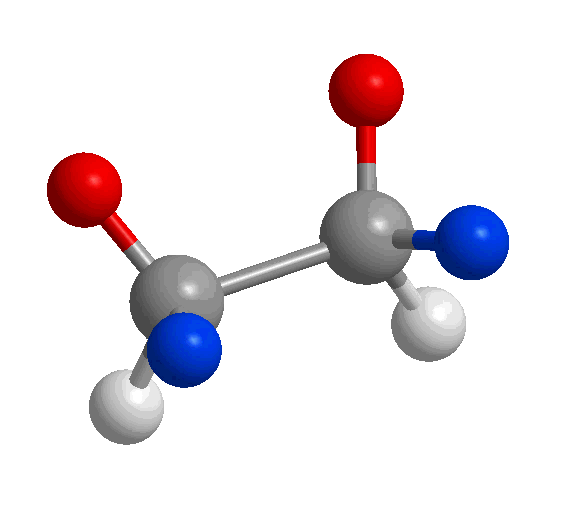Up to this point, all of our molecular depictions have focused on keeping track of the electrons around each atom and the connectivity of the atoms themselves. These models, however, do not reflect that molecules are not static and are constantly vibrating, bending, and rotating. In this section, we will focus on bond rotations and the energetic consequences of such rotations. Once you learn the basics of molecular motion, you will be able to understand protein folding, and even predict the properties of materials you see in everyday life, such as plastics.
At room temperature, molecules rapidly bend, vibrate, and rotate. In the model of ethane to the right (the hydrogen atoms are highlighted in red, blue, and white to help you keep track of their relative positions), these movements have been greatly slowed down. The two conformations of ethane that we studied above can interconvert millions of times per second. While bond bending and vibration have important consequences for spectroscopy and reactivity, we are focusing on molecular rotations as it has more of a direct impact on how we draw and visualize molecules.

Proteins are also macromolecule made from amino acid monomers. Proteins have sections with well-defined secondary structures, such as alpha helices and beta-sheets. The ability to form these structures directly results from the rotational abilities of the amino acid monomers. Proteins also are not static and regularly undergo folding, but the folding is restricted to certain areas of the molecule that are able to bend without disturbing the secondary structures. The cartoon on the right shows a protein with the secondary, tertiary, and quaternary structure (the individual atoms have been omitted for clarity. Notice that the bending occurs primarily in a linear region and not around the alpha helices (i.e. the curled regions).
Polymers are very large molecules (macromolecules) that consist of a series of repeating subunits (monomers). As you well know, different polymers have dramatically different properties. Flexible polymers, such as nylons and polyesters, are frequently utilized in clothing while more rigid polymers, such as polycarbonates and poly-paraphenylene terephthalamide (Kevlar) are used in the construction of riot shields and bullet-proof vests. These properties are directly related to the ability of the macromolecule to rotate. The video below shows the synthesis of nylon. Notice the flexibility of the new nylon strand as it is slowly removed from the reaction mixture.
